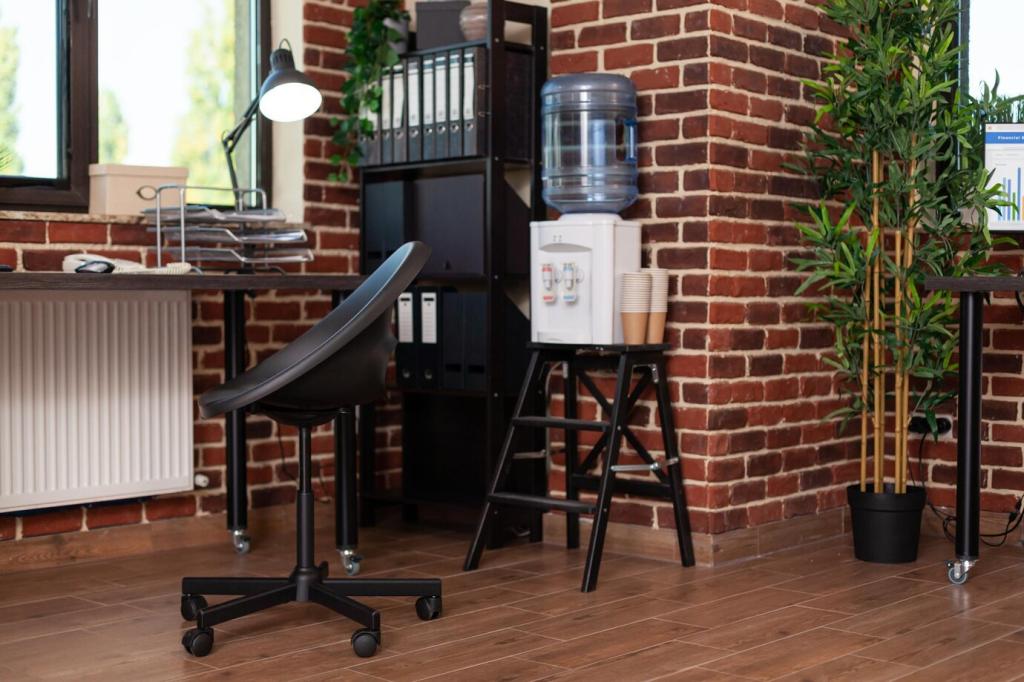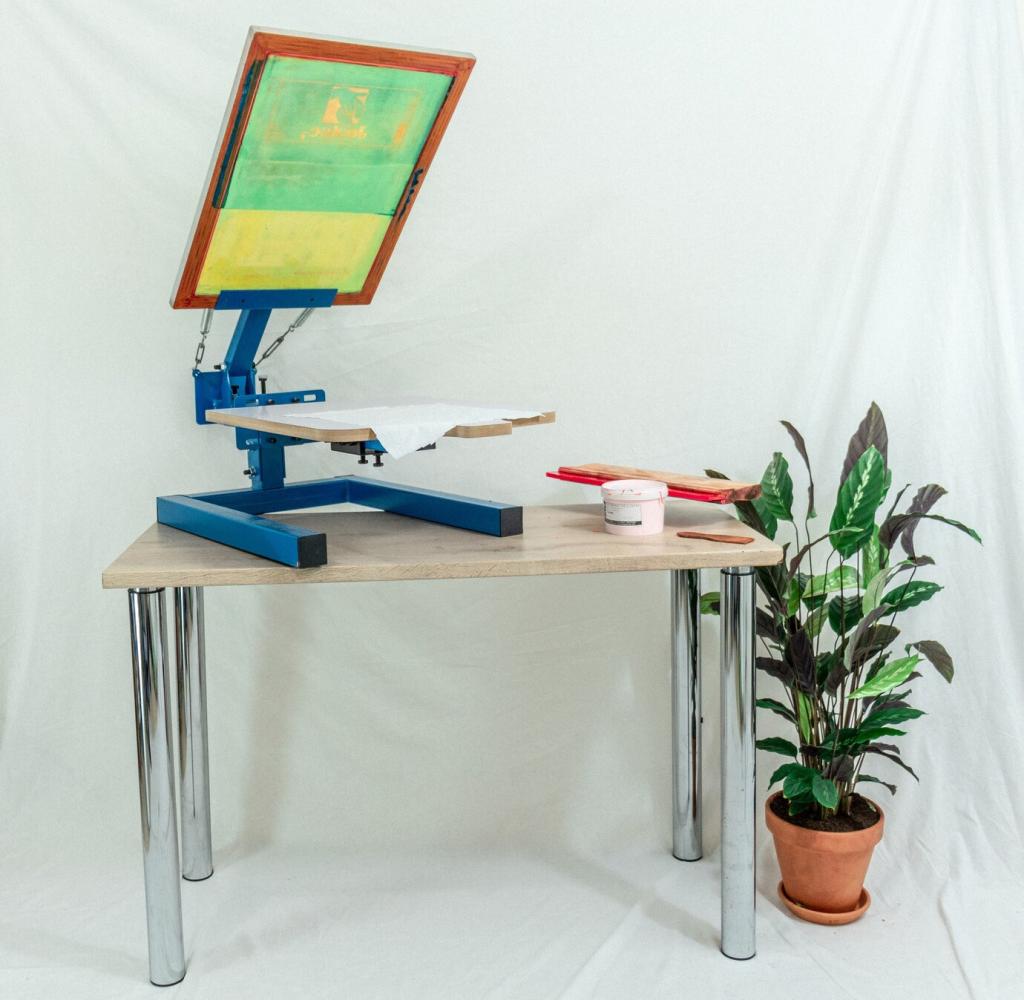Comparing Different Types of Standing Desks: Find Your Perfect Fit
Chosen theme: Comparing Different Types of Standing Desks. Explore how electric, manual, converter, corner, and treadmill options differ in ergonomics, stability, noise, and value—plus real stories to guide your choice. Share your setup, ask questions, and subscribe for ongoing comparisons.
The Standing Desk Landscape: Types at a Glance
Fixed-Height vs Height-Adjustable
Fixed-height standing desks are simple and sturdy, but they lock you into one posture. Height-adjustable desks invite frequent position changes, supporting comfort throughout long days. Comparing both, adjustability usually wins for shared spaces, evolving needs, and better ergonomics over time.
Electric vs Manual (Crank or Pneumatic)
Electric desks move with a button press, offering presets and consistent lift for heavier setups. Manual crank versions trade convenience for independence from power. Pneumatic designs lift quickly with gas springs, ideal for lighter gear. Comparing mechanisms, consider reliability, effort, noise, and expected daily transitions.
Desktop Converters vs Full Standing Desks
Converters sit on top of existing tables, transforming them into sit-stand stations with minimal commitment. Full standing desks replace your base entirely, improving stability and legroom. Comparing both, converters are budget-friendly and portable, while full desks provide superior ergonomics, cable routing, and long-term flexibility.
Neutral Posture and Alignment Across Types
Regardless of type, aim for elbows near ninety degrees, shoulders relaxed, and the screen at eye level to reduce neck strain. Electric desks make micro-adjustments easy, while converters may require monitor arms. Compare reach, tilt options, and stability to keep your neutral posture consistent all day.
Transition Frequency and Microbreaks
Switching between sitting and standing every forty to sixty minutes supports circulation and comfort. Electric and pneumatic desks remove friction, encouraging more frequent changes. Crank desks can discourage quick adjustments, especially under heavy loads. Compare how each type fits your natural rhythms and realistic workday patterns.
Accessory Compatibility and Flexibility
Standing mats, monitor arms, keyboard trays, and footrests can transform comfort. Full desks often handle clamp-on accessories easily, while some converters limit mounting options. Compare leg clearance, edge thickness, and grommet placements to ensure your chosen type supports accessories without wobble, collisions, or awkward wrist angles.
Stability, Materials, and Build Quality Compared
Two-stage and three-stage legs, crossbars, and foot length all influence stability. Electric frames often include telescoping legs with better rigidity at standing height. Converters introduce leverage above the base desk, amplifying movement. Compare lift columns, cross-supports, and fastener quality to minimize side-to-side sway and front-to-back wobble.
Stability, Materials, and Build Quality Compared
Laminate tops resist spills and are budget-friendly; bamboo offers warmth with surprising strength; solid wood brings character and weight. Converters rely on lighter platforms to remain portable. Compare thickness, edge quality, and finish texture to balance durability, aesthetics, and how the surface feels under your wrists throughout the day.

Modern electric desks often lift around one to two inches per second, with well-tuned motors staying pleasantly quiet. Cheaper drives can whine under load. Comparing models, speed encourages more position changes, while quiet operation protects focus during meetings. Seek published noise ratings and watch real-user videos for context.

Space, Style, and Fit for Your Room
Corner and L-Shaped vs Rectangular Designs
L-shaped and corner standing desks maximize surface area and define zones for writing, typing, and reference material. They can improve stability with wider feet and crossbars. Comparing rectangular desks, you gain simpler placement and easier cable routes. Match shape to traffic flow, window light, and camera angles for calls.
Small Spaces and Portable Options
Slim electric frames, narrow tops, and compact converters help micro-apartments and dorm rooms. Folding converters stow away quickly, while pneumatic single-column desks reclaim floor area. Compare depth, base footprint, and leg clearance to ensure knees, pedals, and footrests fit without cramping movement or blocking storage access.
Cable Management and Visual Calm
Grommets, trays, zip sleeves, and magnetic raceways keep movement safe and clean. Full standing desks often integrate better routing than converters. Compare under-desk clearance, outlet proximity, and accessory mounts so lifting doesn’t yank cables, strain ports, or turn your workspace into a distracting curtain of cords.
Converters cost less and install fast, bringing standing benefits to existing tables. Electric desks cost more initially but encourage consistent adjustments and future-proof accessory mounting. Compare how much you will actually switch positions daily, because frequent comfortable transitions often repay the investment more than specs alone.
Budget, Value, and Long-Term Ownership
Look for leg warranties, motor coverage, and desktop protections that reflect intended use. Manual frames are simpler to service at home, while electric systems depend on reliable electronics. Compare spare part availability, clear documentation, and community support to keep your workstation dependable throughout changing projects and moves.
Budget, Value, and Long-Term Ownership
Real People, Real Desks: Stories from the Field
01
A Freelancer’s Converter That Sparked a Habit
Maya slid a compact converter onto her vintage dining table, promising to stand during edits. The low barrier helped her start. Within weeks, frequent transitions became normal, but limited monitor adjustment nudged her toward a full standing desk for better posture and cleaner cable routing.
02
A Developer’s Electric Desk That Encouraged Flow
Ethan mapped presets for code, review, and pairing sessions. One button press shifted height between tasks, reducing fidgeting and keeping his wrists neutral. The quiet lift meant no disruption on calls, and a sturdy frame killed wobble during intense typing sprints with dual ultrawide monitors mounted above.
03
A Teacher’s Crank Desk That Outlasted Moves
Rita chose a crank desk for its simplicity and resilience. After three classroom relocations, the mechanism still worked, though raising it with heavy document stacks took effort. The reliability won her trust, but she now plans a pneumatic upgrade to encourage more frequent microbreaks between lessons.
